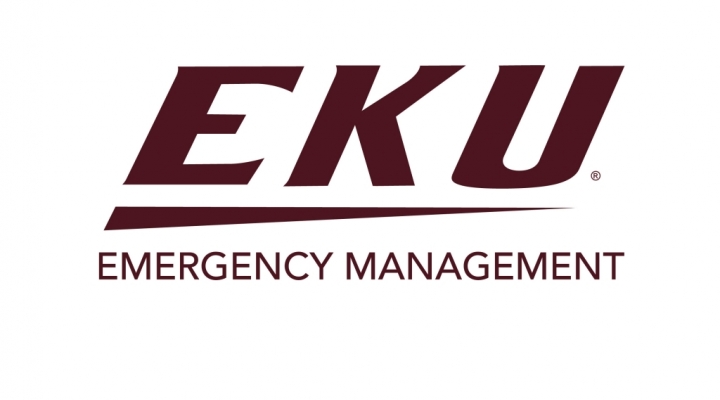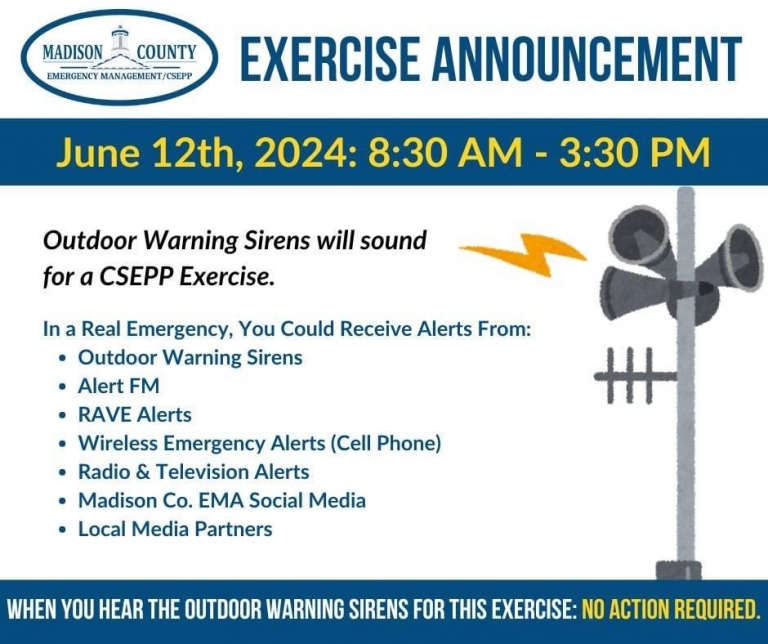Emergency Management & Security
Falling under the Division of Public Safety, EKU Emergency Management is responsible for emergency planning and facilitating training for the campus community. In August 2009, the EKU Emergency Action Plan was implemented and replaced the Campus Emergency Response Plan. EKU Emergency Management is located at the Adams House.
The Eastern Kentucky University Emergency Action Plan (EAP) is designed to provide basic information so that the reader can be better prepared in the event of an emergency or critical incident. The EAP is based upon the International Association of Campus Law Enforcement Administrators' (IACLEA) model, which is rooted in the National Incident Management System (NIMS). The EAP is not designed to give definitive answers for every type of emergency. Each incident is unique and constantly evolving. Only those involved in the incident can make decisions that they believe are correct to ensure their own safety. The EAP provides resource material so that informed decisions can be made.
This summary cannot provide detailed information about every type of incident. For more detailed information, please consult the appropriate section of the Emergency Action Plan. In order to ensure your safety, please follow the basic steps listed below.
- Fires/Fire Alarms - Evacuate the building immediately and do not return until authorized by emergency responders. Always know at least two evacuation routes in case the primary evacuation route is blocked. Do not use elevators.
- Severe Weather - Go to the interior of the lowest level of the structure away from windows, doors, and exterior walls. Remain there until the severe weather has passed.
- Medical Emergencies - Check to ensure you are safe, check the victim, call 911 for assistance, and render aid as necessary and appropriate to your training.
- Crime and Violent Behavior - Protect yourself as best you can and contact police as quickly as possible.
- Hostile Intruder - Includes a physically aggressive person, hostage taker, or an active shooter. Stay as calm as possible, avoid drastic actions that could escalate the situation, and do what is necessary to protect yourself. This could include running away, hiding, playing along, playing incapacitated, or fighting (if absolutely necessary).
- Bomb Threats - Leave the threatened area immediately and notify responders of any suspicious items you notice. Be aware of the potential for a second threat in the evacuation area.
- Hazardous Material Release or Spills - Evacuate the spill area immediately and attempt to secure the area. Attempt to isolate those who have been exposed. Call 911 immediately and provide as much information about the incident as possible.
- Seasonal or Pandemic Flu - To avoid spreading germs, always cover your coughs and sneezes. Wash hands or use sanitizer regularly. If you are sick, do not come to work or class. Get a yearly flu vaccination.
Being prepared is the most important step that anyone can take to minimize their risks during an emergency. Advanced planning can save time when making decisions about what action to take during a critical incident. No document or person can provide concrete answers about a given situation. Individuals are responsible for their own safety and to prepare themselves for emergencies. The information provided in the Emergency Action Plan is designed to provide the resources for informed decision making. We encourage you to familiarize yourself with the information contained within the EAP prior to an occurrence and to review the information on a regular basis.
Mission Statement
The mission of EKU Emergency Management is to support the campus community by implementing programs in emergency planning and training to build, sustain and improve the capacity of the University to mitigate against, prepare for, respond to, and recover from emergency incidents.
| Attachment | Size |
|---|---|
| EKU Emergency Action Plan 04052024 | 1004.54 KB |
| EKU Chemical Release Response Manual 06102024 | 2.13 MB |








